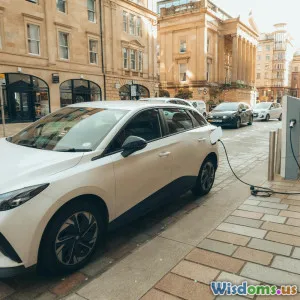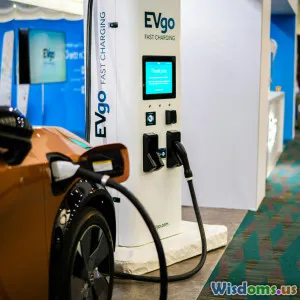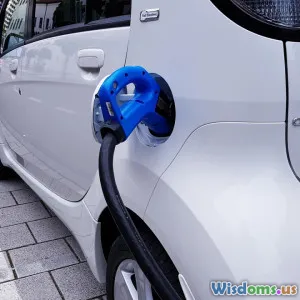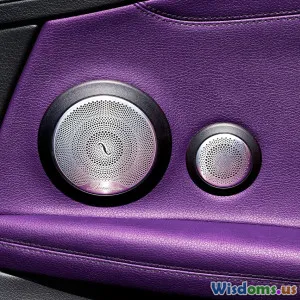
How to Choose Between a Hybrid and Fully Electric Car in 2024
11 min read Discover how to select the best car for 2024 by comparing hybrid and fully electric vehicles based on cost, performance, environmental impact, and lifestyle needs. (0 Reviews)
How to Choose Between a Hybrid and Fully Electric Car in 2024
The automotive industry is rapidly evolving as electric propulsion takes center stage. With cities pushing for cleaner air and governments offering incentives, the choice between hybrid and fully electric vehicles (EVs) has become a hot topic for aspiring car buyers in 2024. But how do you decide which option best suits your lifestyle, budget, and values? This comprehensive guide will demystify both vehicle types, dissecting their strengths, weaknesses, and real-world implications to empower your next car purchase.
Introduction: The Electric Horizon
Imagine gliding through city streets mostly powered by electricity, sharply reducing emissions and gas station visits. Fully electric vehicles make this vision a reality with zero tailpipe emissions, while hybrids offer a bridge – blending traditional fuel with electric support for enhanced efficiency. Both have surged in popularity recently, but discerning car buyers face a fundamental question: Should you go hybrid or fully electric?
The stakes are high since this choice influences not only fuel cost and convenience but also environmental impact and long-term ownership satisfaction. By the time you finish reading, you will have a crystal-clear picture of which technology can align best with your individual driving pattern and values.
Understanding the Basics: Hybrid vs Fully Electric
What is a Hybrid Car?
Hybrids combine an internal combustion engine (ICE) with an electric motor that runs on a rechargeable battery. There are two main subtypes:
- Conventional Hybrids (HEVs): Like the Toyota Prius, these recharge their batteries through regenerative braking and by running the engine. Drivers do not need to plug them in.
- Plug-in Hybrids (PHEVs): Vehicles such as the Hyundai Tucson PHEV can be plugged into an external power source, enabling longer distances on electric power alone before automatically switching to hybrid mode.
This mix affords hybrids flexible energy use and simplified refueling options.
What is a Fully Electric Vehicle?
Fully electric cars (EVs) are powered exclusively by electricity stored in large battery packs, eliminating the gasoline engine entirely. Examples include the Tesla Model 3, Nissan Leaf, and Ford Mustang Mach-E. EVs require regular charging from home or public stations, delivering smooth acceleration, silent rides, and zero tailpipe emissions.
1. Cost Considerations
Purchase Price and Incentives
Generally, hybrids tend to have a lower upfront cost than fully electric models because of their smaller batteries and mixed powertrain. For instance, the base Toyota Corolla Hybrid starts around $25,000, while entry-level EVs like the Chevrolet Bolt EV begin near $27,000.
In 2024, many countries and states continue offering tax credits and rebates for EVs, sometimes more generous than those for hybrids. The U.S. federal EV tax credit can reduce the cost by up to $7,500, depending on the vehicle model and buyer eligibility.
Operating Costs
Electric vehicles boast far lower operating expenses. Electricity is cheaper than gasoline — driving an average American EV can cost around $500 annually in fuel compared to $1,200 for gasoline. Furthermore, EVs have fewer moving parts, translating to substantially reduced maintenance costs. No oil changes or transmission work are needed.
Hybrids, while more economical than conventional cars, still require fuel and certain ICE-related maintenance, maintaining a middle ground in total cost of ownership.
Resale Value and Depreciation
The evolving EV market implies higher uncertainty in resale value due to rapid technology advancements. However, popular fully electric models like Tesla often retain value well. Hybrid vehicles are usually more stable, mirroring the trends of gasoline-powered cars but increasingly benefiting from growing interest in efficient vehicles.
2. Environmental Impact
Tailpipe Emissions
Fully electric cars produce zero emissions at the tailpipe, significantly reducing greenhouse gases during operation. In contrast, hybrids still emit CO2 when running on gasoline, though less than conventional vehicles due to their electric assist.
According to the U.S. Department of Energy, EVs typically produce 60-70% fewer emissions over their lifetime than traditional vehicles when accounting for electricity generation.
Battery Production and Recycling
One common concern is the environmental footprint of manufacturing large lithium-ion batteries used in EVs. While energy-intensive to produce, improvements in recycling and second-life usage aim to mitigate this impact.
Hybrids use smaller batteries, but still face similar challenges. It's crucial to evaluate the full lifecycle emissions, not just operational impacts.
3. Performance and Convenience Factors
Driving Range and Refueling
Range anxiety is a classic EV challenge. Many new electric vehicles now offer ranges between 250 and 350 miles on a single charge. For example, the Hyundai Ioniq 5 can travel over 300 miles, making daily commuting or moderate road trips feasible.
Hybrids don’t require charging infrastructure since they utilize gasoline, guaranteeing extended range and quick refueling, ideal for long-distance travel where charging options may be limited.
Charging Infrastructure
The EV charging network is growing exponentially in 2024, with over 120,000 public chargers available in the U.S. alone, including fast chargers capable of adding 80% battery in under 30 minutes. Home charging installation remains practical for most buyers, especially those with garages.
For buyers lacking charging access (such as apartment dwellers), hybrids offer significant practicality by eschewing charging while still improving fuel economy.
Driving Experience
EVs offer instantly available torque, resulting in smooth and quick acceleration—Tesla’s Model 3 can do 0-60 mph in under 4 seconds. Hybrids provide a more conventional feel with engine noise and transition between gas and electric modes that can sometimes be perceptible.
EV buyers often praise the quiet, vibration-free drive and low center of gravity for enhanced handling.
4. Lifestyle and Usage Patterns
To make the right choice, understand your typical driving habits:
- Urban Commuters: Those with short daily trips <=50 miles benefit greatly from an EV’s efficiency and zero emissions, especially with home charging.
- Long-Distance Drivers: Hybrids or PHEVs provide flexibility without the constant need to seek charging stations.
- Environmentally Conscious Buyers: Fully electric cars offer higher environmental advantages and align with efforts to reduce carbon footprints.
- Budget-Conscious Consumers: Hybrids tend to be more affordable upfront and avoid potential range anxiety-related inconveniences.
Involving family members or colleagues who tackle similar travel challenges can reveal practical insights.
5. Real-World Insights and Market Trends
Industry Acceleration
Automakers like General Motors aim for 100% electric light-duty vehicle sales by 2035, indicating hybrids may become interim solutions on the path to full electrification.
Technological Advances
Solid-state batteries and ultra-fast chargers promise better range and quicker charging in future EVs, gradually eroding current limitations.
Case Study: Norway
In Norway, where EVs surpass 80% of new vehicle sales, widespread public charging availability and governmental policies have accelerated adoption, showcasing the transformative impact of infrastructure and incentives.
Conclusion: Making the Choice in 2024
Choosing between a hybrid and fully electric car in 2024 hinges on a complex interplay of factors — budget, driving patterns, infrastructure, and environmental values.
-
Go fully electric if: You have access to reliable charging (especially home), your daily miles fit comfortably within the EV range, and you prioritize minimal emissions and lower long-term costs.
-
Choose a hybrid if: Your driving includes frequent long trips without dependable charging options, you want a relatively lower upfront cost, or you prefer the familiar fueling experience combined with increased fuel economy.
Ultimately, both technologies facilitate a cleaner, more sustainable automotive future when replacing traditional gasoline vehicles. The best choice is one that serves your needs today while steering you closer to a greener tomorrow.
Empowered with knowledge and insight, you're now ready to take the next step into the evolving world of automotive electrification. The perfect match awaits your drive in 2024.
Rate the Post
User Reviews
Popular Posts



















